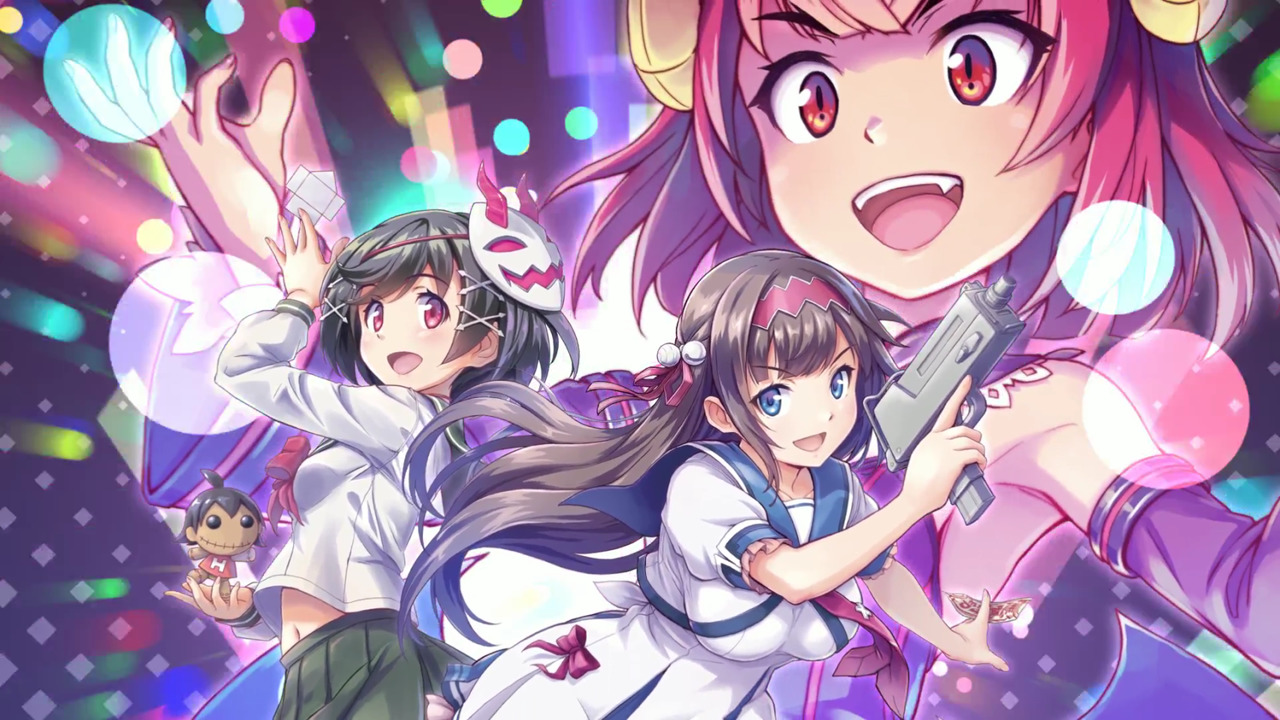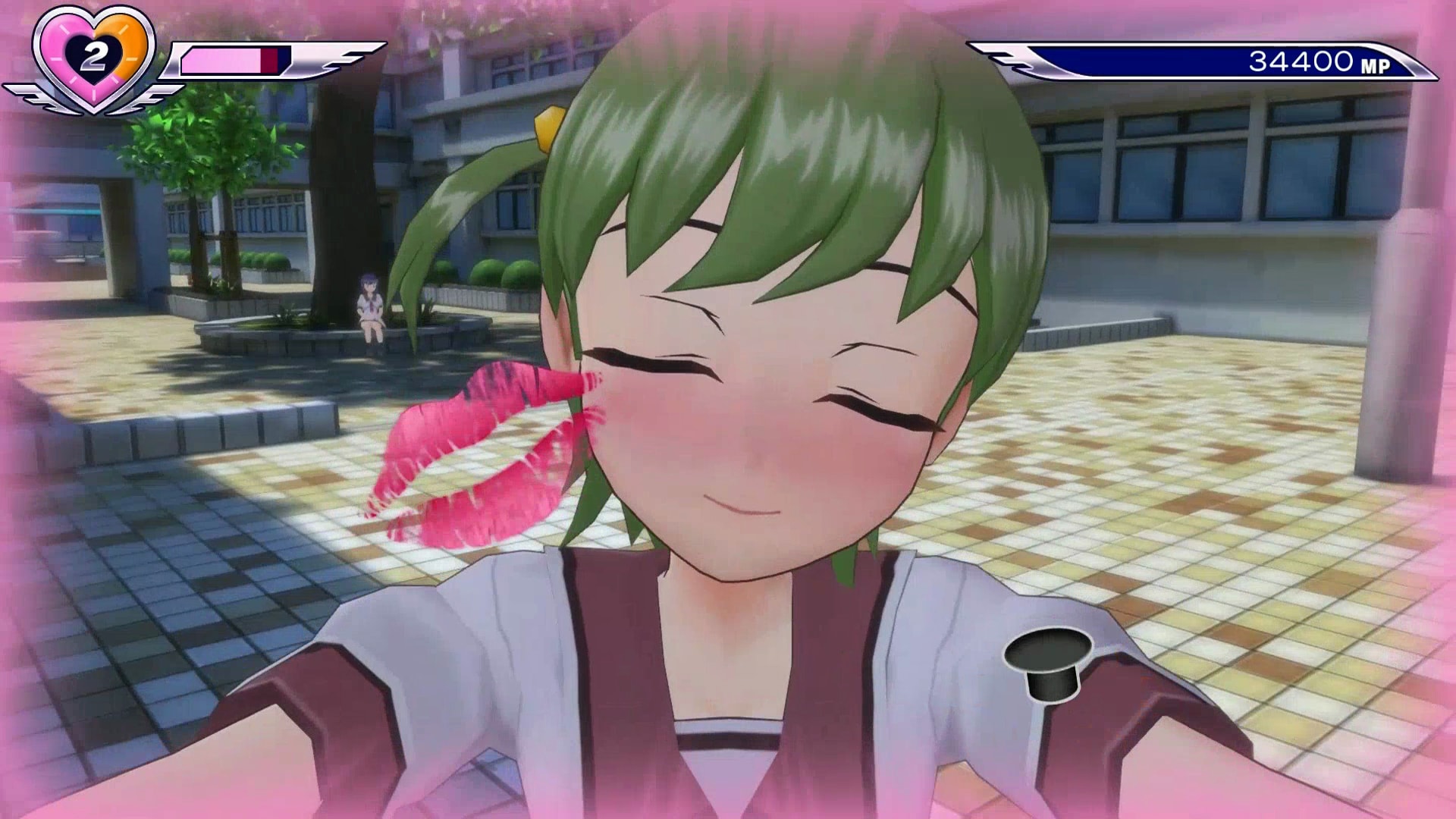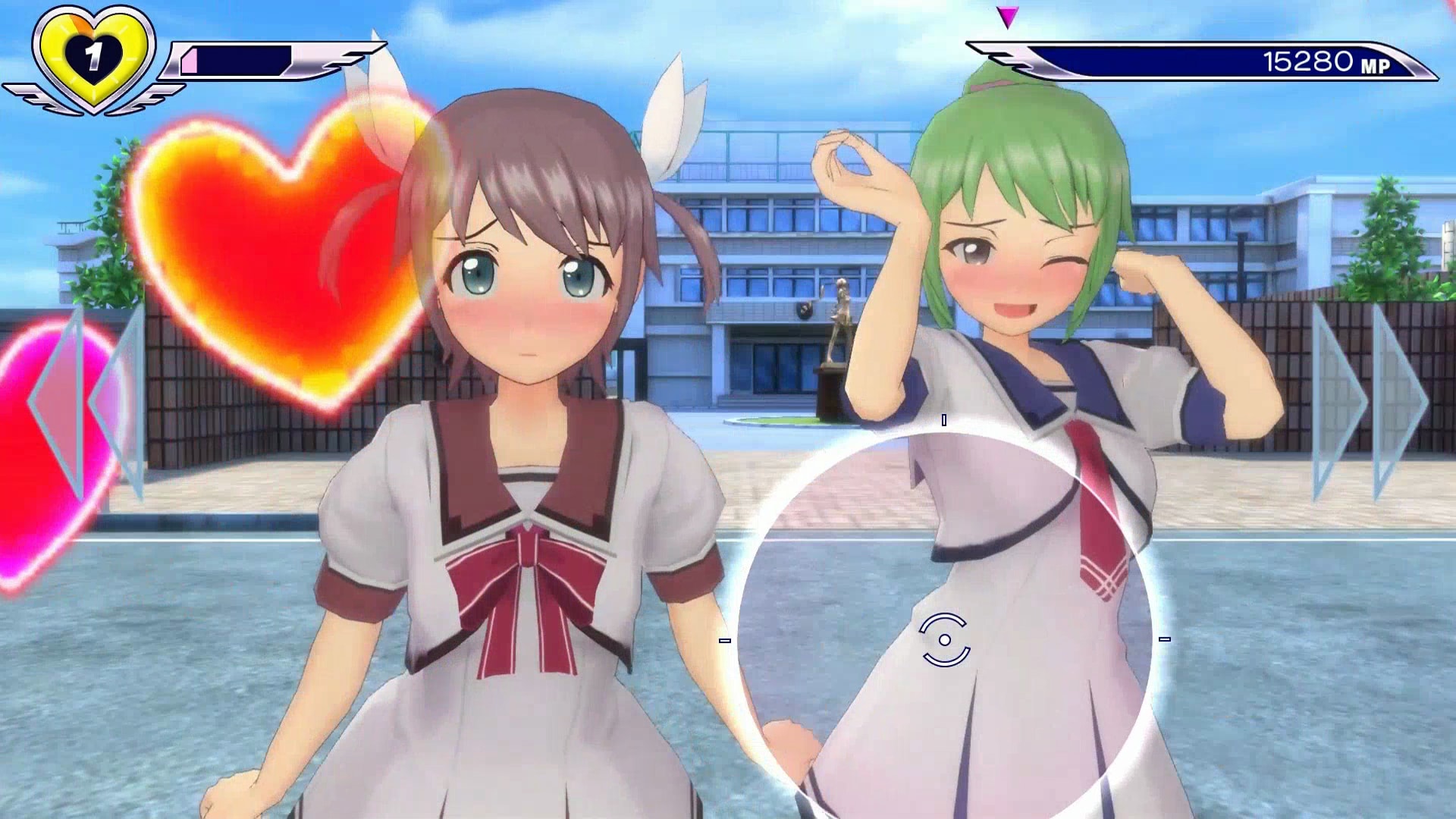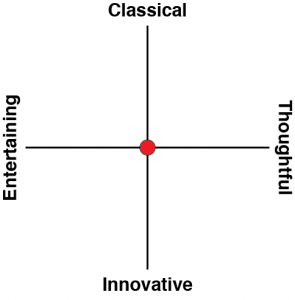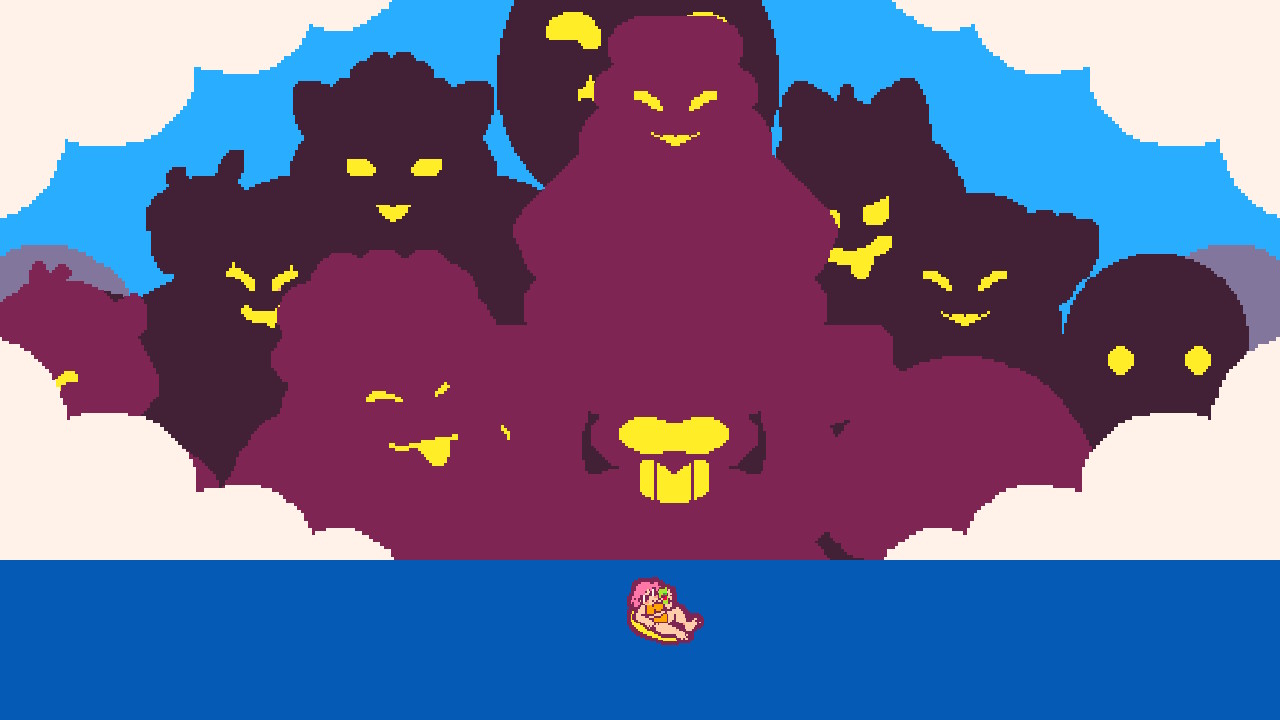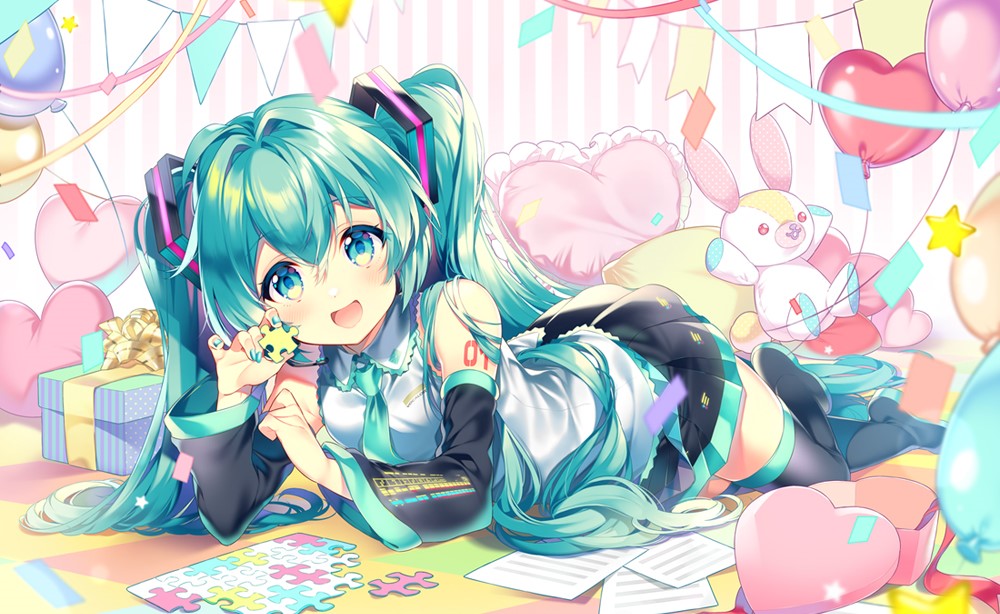I’ve already reviewed Gal*Gun: Double Peace twice – once on import when it was originally released, and then again when PQube localised it for the rest of the world. I don’t have too much to add to either of those reviews in terms of an analysis of how they play, so I’ll point you in their direction for my full and in-depth thoughts in that regard. What I will also say here is that the Nintendo Switch is the ideal platform for these games, and Gal*Gun: Double Peace, as the most coherent and engaging of the series, plays perfectly well on its new home.
For this review, though, we’ll need to deal with the elephant in the room. Again. The thing that is unavoidable with any discussion to do with Gal*Gun is, of course, the fan service. This is an on-rails shooter with the unique quirk that you’re not shooting to kill. Rather, you play as a hapless guy who actually got… infected… with an entire quiver of arrows by Cupid, and now literally every girl around him wants to jump him. The only way he can fend them, their kisses, and professions of love off in his quest to find the girl of his dreams by the end of one day is to use a pheromone gun to drive each of the girls into a state of ecstasy.
If this was all there was to it, then Gal*Gun would be a fairly straightforward and inoffensive rails shooter, albeit one with a wacky concept. It’s where the fan service cuts in that people start to have issues with this series. The pheromone gun has a “zoom” function that, if placed over a girl, will make her clothes go slightly transparent. To be blunt, you’ll see a flash of lingerie at 50 per cent opacity for a second or two as you fire away and watch the girl melt in ecstasy. Then there’s Doki Doki mode, which works like a super-powered attack. Launch that and you’ll play a little minigame where you need to tap an icon all over the girl’s body before she explodes in ecstasy and takes all the other girls around her out.
Are these features pushing boundaries? Absolutely. I think it’s pretty safe to say they actually leap over those boundaries. The combination of voyeurism and the school setting is going to make people uncomfortable from just the screenshots. The way the game has several key scenes that play into various ecchi anime tropes isn’t going to help matters with these people.
The big question is what the fan service is in service of, though. Is Gal*Gun satirical, or titillating? Is it aiming to be sexy, or it’s using a bunch of “sexy anime” tropes to say something? That’s really the difference between something being uncomfortable just because it’s uncomfortable, or something that’s being uncomfortable to make a point. Study courses on transgressive art or the line between art and pornography and this is 101, first lecture stuff. The most basic foundation of the entire discussion. Gal*Gun certainly isn’t a complex or nuanced addition to the discussion, but I genuinely don’t see how anyone could see what it is doing as anything but satirical.
That then brings us to the question of what the satirical angle might be. My thesis has always been that it has to do with the inversion of norms both within the anime world and a significant cross-section of Japanese society. In Gal*Gun you play as a hapless sex object, with little agency or control. Even your defence mechanism is only effective in giving the hordes of horny people attempting to molest you exactly what they want. Oh, and you’re male. So much of what goes on in Japanese (especially otaku) spaces is typically the exact opposite to this, and from idol culture to gravure, anime to adult film, the default premise is the male is the sexually aggressive one, while the woman is the one lacking in meaningful agency over the situation.
I write more about that in one of the other reviews, so I won’t re-tread it further. The point is, though, that I don’t think – and have never thought – that Gal*Gun is sexy. Dead or Alive Xtreme 3 is explicitly trying to be sexy. A lot of B-horror games (School Girl/Zombie Hunter, Lust for Darkness), do try to tap into the way grindhouse uses sex to titillate. But Gal*Gun is overtly not these things. Depending on your read it’s either self-aware or outright critical of the norms it depicts, and it’s aiming to make you laugh. Not reach for the tissues. The extensive fan service is hyperbolic – a very typical tool in satire – to draw attention to its key themes through exaggeration. Were Gal*Gun more subtle about the fan service, it would have come across as a far more sincere effort to be sexy. Here, though, it’s just too over-the-top to take seriously in that role, and so it clearly supports the satire. Now, of course, you don’t necessarily have to think of it as good satire – I do, but as with everything to do with the arts, that’s entirely subjective – but reading the game correctly means reading it as, at the very least, an attempt at satire.
Now, with all of that out of the way, back to the Switch version: the game plays flawlessly on the Switch, and is a good fit for the console. A single run through the story will take you around three or four hours, which fits nicely within the console’s battery life, and gives it a pick-up-and-play quality that might be preferable for on-the-go play than a mammoth RPG. With plenty of different story endings, there’s more than ample reason to replay the game (it’s actually quite meaty by on-rails shooter standards), and even on the Switch’s smaller screen in handheld mode, the simple and clean character models show up nicely.
Gal*Gun: Double Peace was excellent on its original release on PlayStation 4, and it’s excellent here. People will no doubt write this up as shallow and crass titillation, just as they did with the first release, but then shallow commentary isn’t exactly uncommon where anime and fan service is involved. The game is satire and it is therefore a commentary. You don’t have to like it, but that doesn’t change what it is. Without a doubt, Gal*Gun will unsettle some people, and that’s fine – the game’s just not for you, and you don’t have to buy it – but if you do find these kinds of games interesting, and have somehow missed out on the series to date, now you can jump in with the best in the series, on the console best suited to it.
